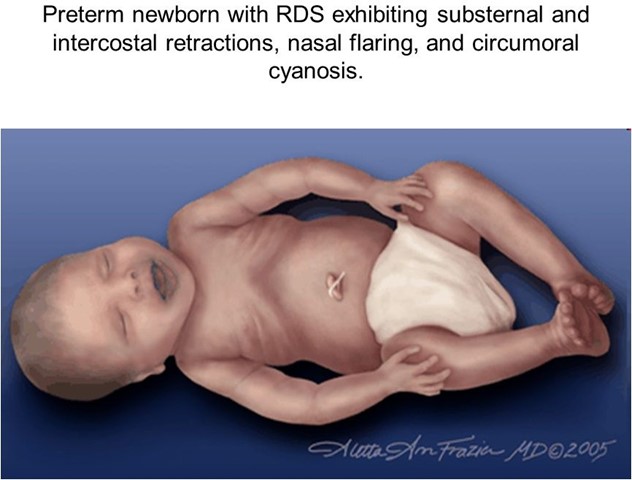The practical nurse (PN) receives shift report for four newborns in the full-term newborn nursery. Which infant should the PN assess first?
The ten-hour-old with circumoral cyanosis.
The one-day-old with a positive Babinski's reflex.
The two-day old with negative Ortolani's sign.
The six-hour-old with a large sacral "stork bite".
The Correct Answer is A
Circumoral cyanosis is a bluish discoloration around the mouth that indicates inadequate oxygenation. It is an abnormal finding in a full-term newborn and requires immediate assessment and intervention by the PN.

The other options are not correct because:
B. A positive Babinski's reflex is a normal finding in newborns that indicates intact neurological function. It is elicited by stroking the sole of the foot and observing the fanning of the toes.
C. A negative Ortolani's sign is a normal finding in newborns that indicates no hip dislocation or dysplasia. It is elicited by abducting the hips and feeling for any clicking or clunking sensation.
D. A large sacral "stork bite" is a common benign birthmark that appears as a reddish patch on the lower back or nape of the neck. It usually fades within the first year of life and does not require any treatment.
Nursing Test Bank
Naxlex Comprehensive Predictor Exams
Related Questions
Correct Answer is A
Explanation
The correct answer is Choice A:
"Are you planning to obey the voices?.”. Choice A rationale:
The PN should ask the client if he plans to obey the voices because it helps assess the potential risk of harm to himself or others. If the client indicates an intention to follow the voices' commands to harm someone, it indicates a serious concern for safety and may require immediate intervention to protect the client and others.
Choice B rationale:
While asking if the client believes the voices are real is important for understanding the client's perception of the situation, it may not immediately address the risk of harm that the client or others might be facing.
Choice C rationale:
Asking if the client has taken any hallucinogens is relevant to explore possible substance- induced psychosis, but this question should be asked later in the assessment process. The priority is to assess immediate safety concerns related to the client's compliance with the voices' instructions.
Choice D rationale:
Inquiring about when the voices began is important, but it is not the most urgent question in this situation. Although the onset of the symptoms is relevant, addressing the potential for harmful actions should be prioritized.
Correct Answer is B
Explanation
Correct Answer: B. Joint pain.
Choice B rationale:
Joint pain is the most common symptom experienced by individuals during a sickle cell crisis. The misshapen red blood cells can block blood flow to joints, leading to severe pain and inflammation. Joint pain is a hallmark sign of a sickle cell crisis, and managing pain is a critical aspect of caring for these patients.
Choice A rationale:
Decreased hemoglobin is not the expected symptom during a sickle cell crisis. A sickle cell crisis is characterized by sudden and severe pain due to the misshapen red blood cells blocking blood flow and causing tissue damage. While a sickle cell crisis can lead to anemia, the child experiencing the crisis would be more likely to describe pain and not specifically mention decreased hemoglobin.
Choice C rationale:
Infection is not a typical symptom experienced during a sickle cell crisis. While sickle cell disease can increase the risk of infections, the crisis itself primarily manifests as acute pain due to vaso-occlusion.
Choice D rationale:
Fatigue may be experienced by individuals with sickle cell disease, especially during or after a crisis, but it is not the most likely symptom they would describe during a sickle cell crisis. The hallmark symptom of a sickle cell crisis is severe pain.
Whether you are a student looking to ace your exams or a practicing nurse seeking to enhance your expertise , our nursing education contents will empower you with the confidence and competence to make a difference in the lives of patients and become a respected leader in the healthcare field.
Visit Naxlex, invest in your future and unlock endless possibilities with our unparalleled nursing education contents today
Report Wrong Answer on the Current Question
Do you disagree with the answer? If yes, what is your expected answer? Explain.
Kindly be descriptive with the issue you are facing.
